مغزنگاری الکتریکی (EEG) در پژوهش های زبان شناختی: طراحی آزمون، اجرا و گزارش نتایج
سخنران: مرضیه صمیمی فر کارشناس ارشد زبان شناسی دانشگاه تربیت مدرس ارائه شده در تاریخ 23 دی ۱۳۹۹
سخنران: مرضیه صمیمی فر
کارشناس ارشد زبان شناسی دانشگاه تربیت مدرس
ارائه شده در تاریخ 23 دی ۱۳۹۹
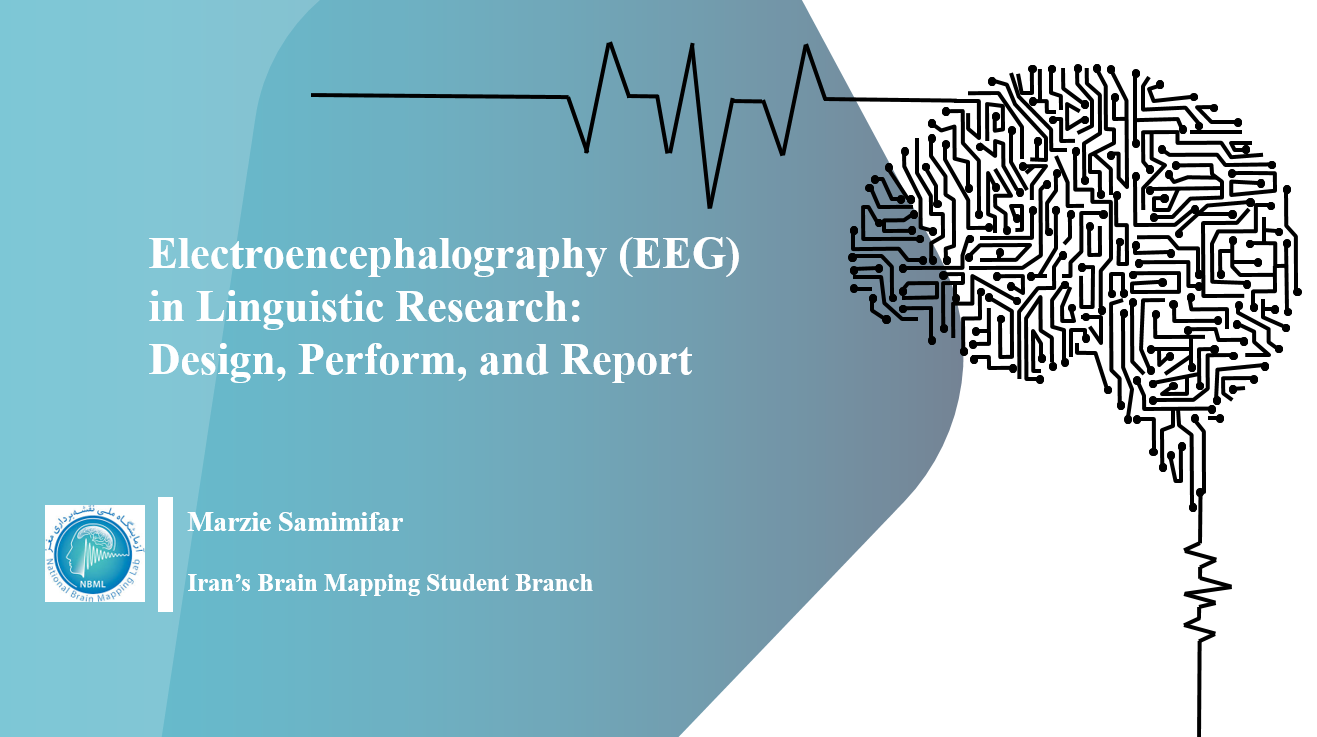
گزارش کوتاه: در وبیناری که توسط خانم مرضیه صمیمی فر ارائه شد پس از توضیحات مقدماتی و معرفی مختصری از تکنیک EEG، روند کامل استفاده از این تکنیک در آزمایش های حوزۀ مطالعات زبان تشریح شد. این روند که شامل نحوۀ طراحی آزمون، آزمون های مختلف زبانی همراه با EEG، اجرای گام به گام آزمون و ثبت سیگنال، و در نهایت تحلیل داده ها و ارائۀ نتایج بود به شکل مفصل توضیح داده شد و بایدها و نبایدهای هر بخش برای انجام عملی آزمایش عنوان شد. همچنین منابعی برای مطالعه و بررسی جوانب مختلف عناوین ارائه شده معرفی گردید.
مختصری دربارۀ موضوع: از آنجا که دانشجویان رشتۀ زبان شناسی آشنایی کمتری با تکنیک های نقشه برداری مغز و کاربرد آنها در این حوزه دارند، در این ارائه قصد بر این بود که نحوۀ استفاده از تکنیک مغزنگاری الکتریکی یا همان ای.ای.جی در پژوهش های زبان-شناختی بیان شود. بدین منظور، ابتدا به توضیح مختصری از این تکنیک و عملکرد آن پرداخته و سپس، انواع آزمون هایی که می توان با استفاده از این تکنیک پیاده کرد، نحوۀ اجرا و نتایج گزارش چنین آزمایش هایی بیان شد.
مهمترین مطالب بیان شده:
- مقدماتی در مورد تکنیک ای. ای. جی
- کاربرد ای.ای.جی. در پژوهش های زبانی
- آزمون های زبانی مختلف در حوزۀ زبان شناسی شناختی
- طراحی آزمون های زبانی با استفاده از تکنیک ای.ای.جی
- اجرا و گزارش نتایج ای.ای.جی در پژوهش های زبانی
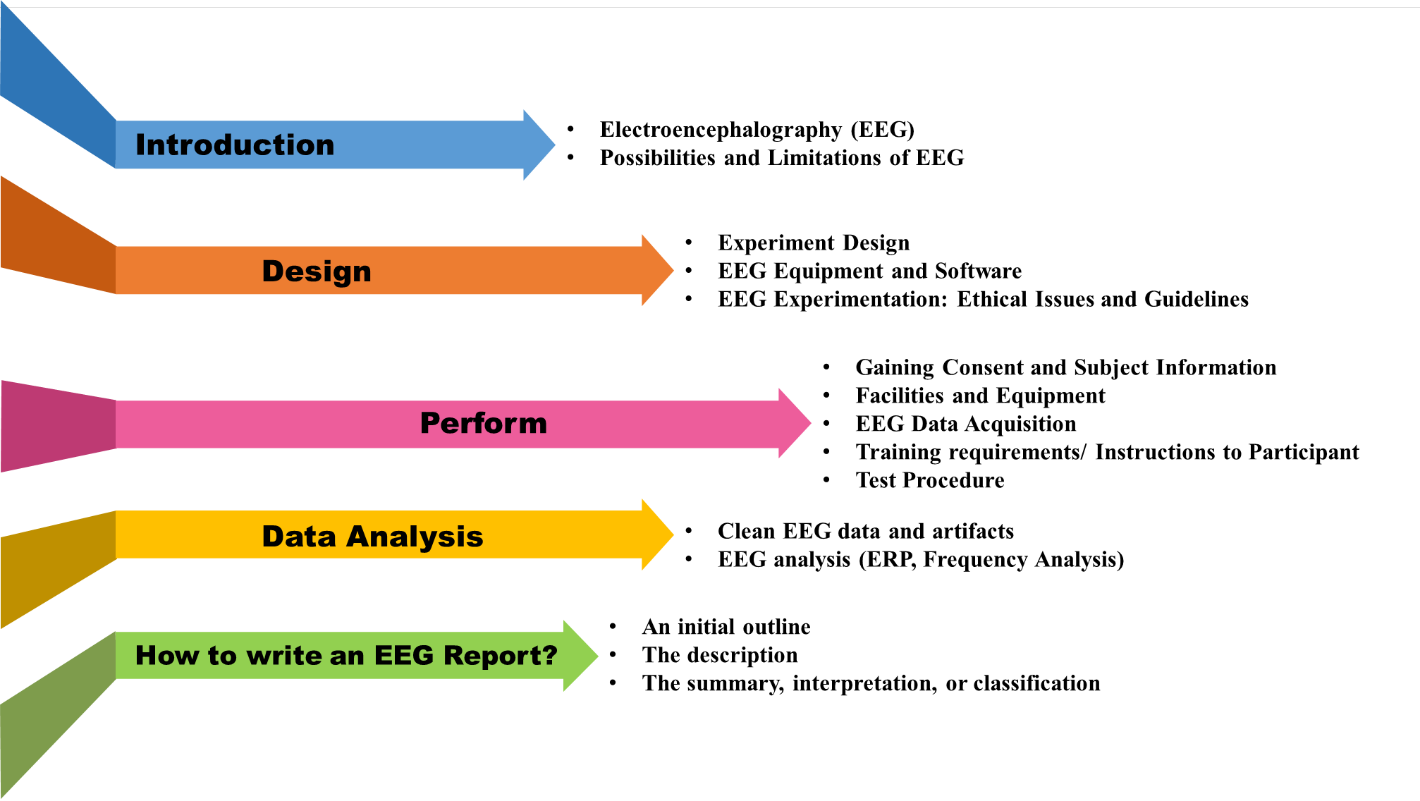
گزارش کامل
شرح سخنرانی: مطالب سخنرانی شامل مقدمه و توضیحات ابتدایی، بدنۀ اصلی مطالب و نتیجه گیری، و همچنین در آخر معرفی منابعی برای مطالعات بیشتر به شرح زیر است.
1- Introduction
Electroencephalography (EEG) is a popular technique that enables to record neuronal activation in real time, with millisecond precision. It has been used effectively to study various aspects of cognition, including language.
Electroencephalography (EEG) reflects the electrical activity (in voltage) of the human brain over time. In the EEG Lab, researchers study how the brain responds to spoken, signed, or written language. EEG can tell us a great deal about the time-course of language processing. While the brain is constantly producing low-frequency electrical activity, researchers are interested in the electrical activity produced as a response to some specific stimuli. This phenomenon can be used to study many types of linguistic research questions.
2- Design
2-1- Experiment Design
Experiment design is the process where the stimuli are defined and it is decided how to present the stimuli to the participants. This can be done using a variety of presentation software.
2-1-1- Objective
Before starting any experiment design in any presentation software, it is necessary that the objective of the experiment is clearly defined. The objective of the experiment in fact fulfills the objective of the study.
2-1-2- Stimulus and Time
The type of stimulus should be defined (e.g., visual, or auditory) and the researcher should design the stimulus to induce the expected changes in the neuronal system of brain that is hypothesized in the study.
2-1-3- Trials, Blocks, and Conditions
The number of trials of each stimulus and total number of trials should be specifically defined in the design. If there are different conditions involved, then the number of blocks can be more than one.
2-1-4- Participants’ Response and Feedback
In general, EEG experiments consist of participant responses against the stimuli where they mentally (e.g., counting the occurrence of certain stimuli) or physically do any action like pressing a button.
2-1-5- Events Synchronization with EEG (Trigger)

2-2- EEG Equipment and Software
2-2-1- EEG Equipment and Data Acquisition Software
EEG data acquisition is a time-consuming activity that needs clear objectives and proper planning to acquire the desired EEG signals.
2-2-2- Presentation Software
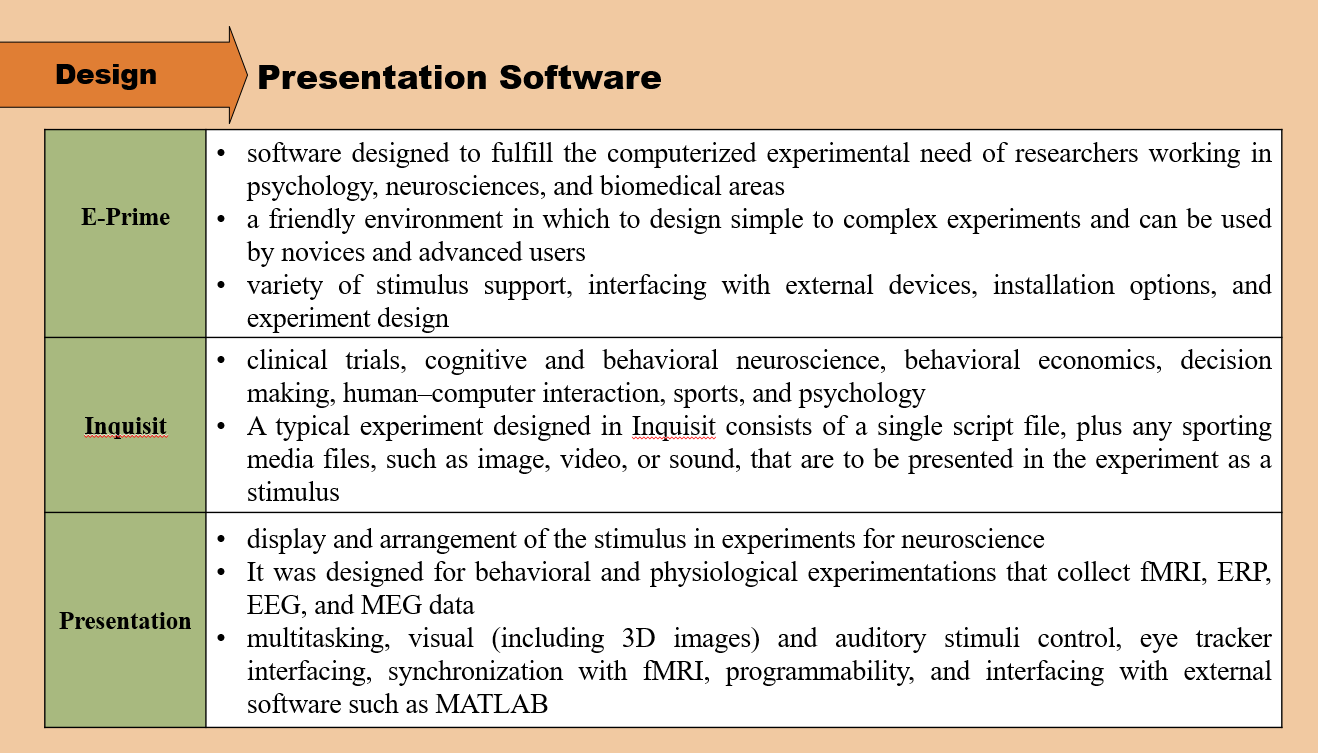
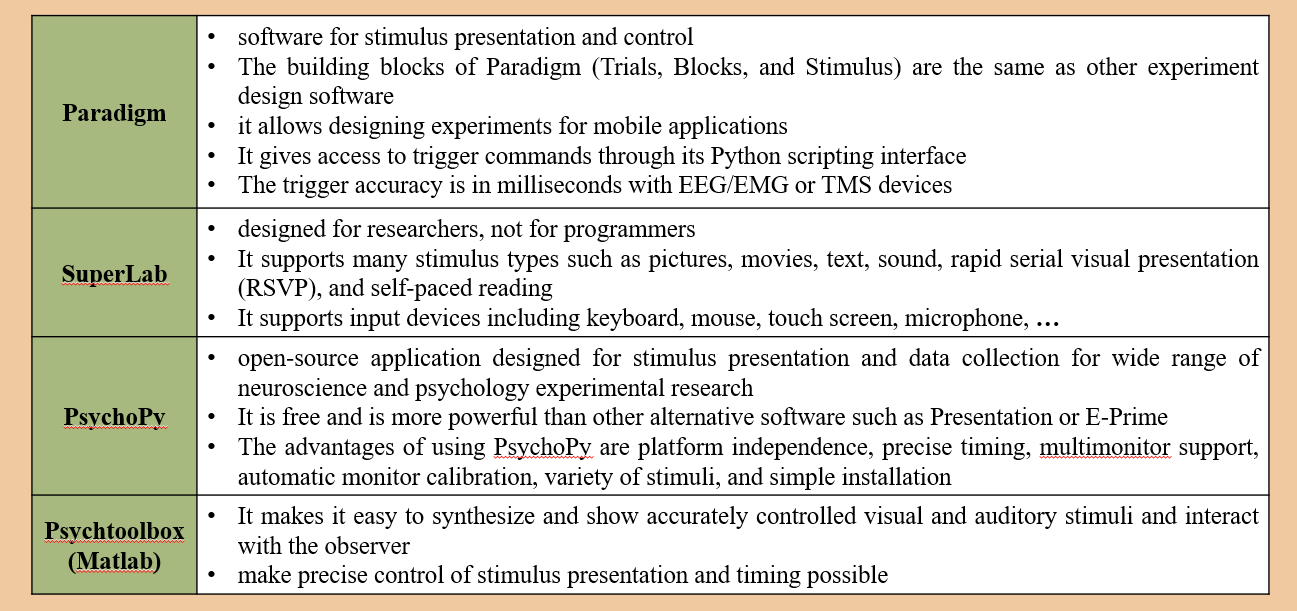
2-3- EEG Experimentation: Ethical Issues and Guidelines
2-3-1- Ethical issues: Gaining Consent/ ethics approval
2-3-2- Sample Size Computation
Sample size computation is an important aspect of neuroscience, behavioral, and clinical investigations. Practically, it is not feasible to include the whole population in any research study. There is always a common question, “How many individuals should be included in the research study?” Thus a small set of individuals is selected from the population that is small in size but statistically sufficient to represent the target population.
3- Experiment call
3-1- Subject Qualifications
Age, handedness, mood, education, culture, gender, language, health, …
3-2- Questionnaires
Handedness, GHQ, PANAS, Language History, …
4- Perform
4-1- Gaining Consent and Subject Information
4-2- Facilities and Equipment
4-3- EEG Data Acquisition
4-3-1- General Data Acquisition Setup:
The general acquisition setup should be planned and previous literature should be consulted. The important factors are the number of EEG channels and their configuration (montage, bipolar, or referential), EEG reference selection, sampling rate, filtering, and recording of supplementary data.
4-3-2- Montage (Bipolar, Referential):
Montage is a combination of EEG electrodes during recordings. There are two main types of montage, i.e., bipolar and referential montages.
4-3-3- Sampling Rate:
The sampling rate is the number of quantitative values to be recorded in each channel per second such as 128 samples per second. The higher the sampling rate, the higher the temporal resolution of EEG recordings.
4-4- Perform the routine EEG within a quiet, temperate room with controllable light levels.
Sit or recline the subjects comfortably for the duration of the set up and recording.
4-5- Training requirements/ Instructions to Participant:
In each and every experiment, it is important to define the instructions to the participant in an understandable manner. The instructions may vary from task to task and depend on the target participants. When the researcher finalizes the target participants, the instructions will be prepared accordingly.
4-6- Test Procedure:
First of all, electrodes need to be attached to a subject’s scalp to pick up the EEG.
4-6-1- Electrodes
4-6-1-1- Number and Distribution of Electrodes
4-6-1-2- Dry or Gel-Based Electrodes
4-6-1-3- EEG References
4-6-1-4- Electrode Placement
The 10-20 system
4-6-1-5- Electrode Impedance
4-6-2- Pre-test Checks
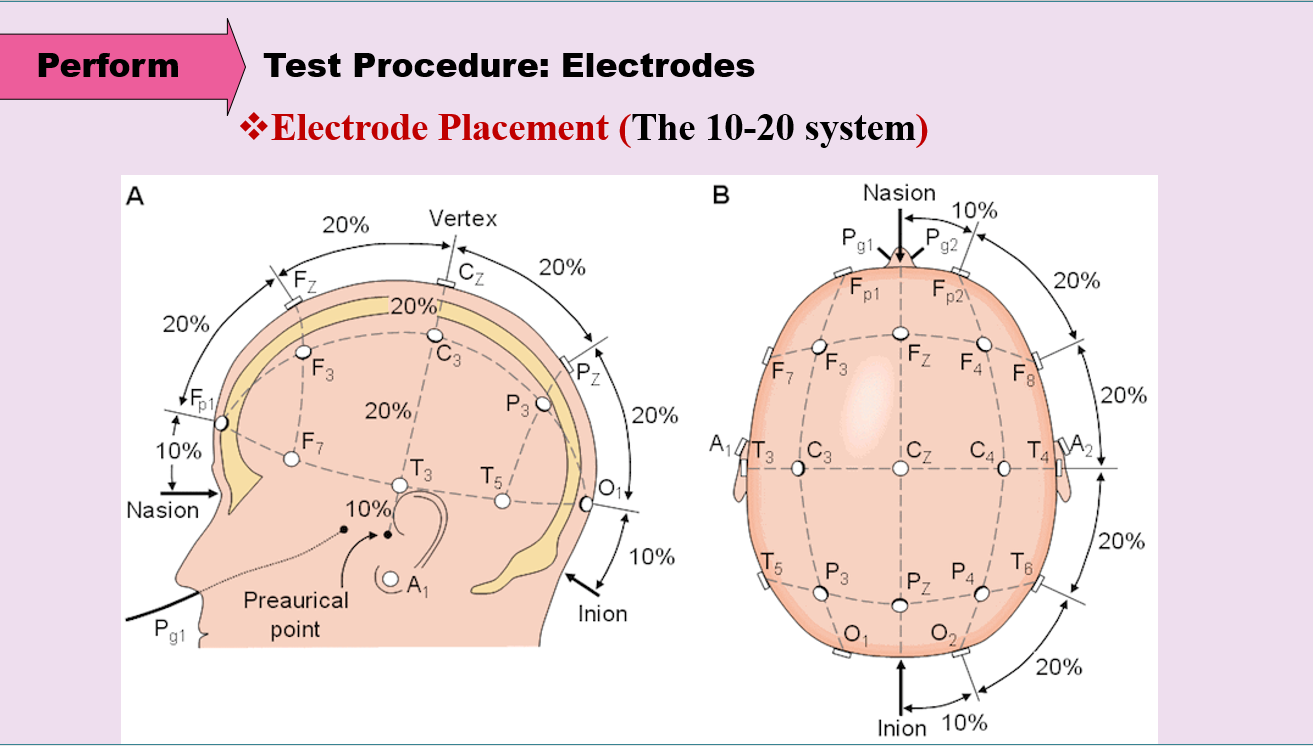
4-6-3- Recording
Annotations
Make regular annotations to mark any changes in the EEG or the subject’s state and behavior throughout the recording. This includes any movement of the subject, any external stimuli, artefacts, instructions given etc.
Length of Recording
Machine Settings – Display
Polygraphic recording
During the routine EEG it may be necessary to record from additional polygraphic channels generally with the purpose of distinguishing artefact from cerebral potentials.
4-6-4- End of Task
5- Data Analysis
5-1- Clean EEG data and artifacts
Before you jump into data collection and analysis, there’s one thing you should make your mantra: There is no substitute for clean data. Always make sure your data is as clean as possible, meaning the collected data reflects brain activity only.
5-1-1- Physiological artifacts
5-1-1-1- Muscle activity (EMG, ECG)
5-1-1-2- Eye movements
5-1-1-3- Blinks
5-1-2- External sources of artifacts
5-1-2-1- Movement
5-1-2-2- Line Noise
5-1-2-3- Swaying and Swinging
5-2- EEG analysis (ERP, Frequency Analysis)
Despite its widespread use, there exists a certain degree of uncertainty as to how the EEG signal should be analysed. Although there is a number of EEG signal preprocessing steps that are common to different analysis methods, their parameters need to be properly adjusted so as not to affect the signal in an adverse way, resulting in false representation of the brain signal.
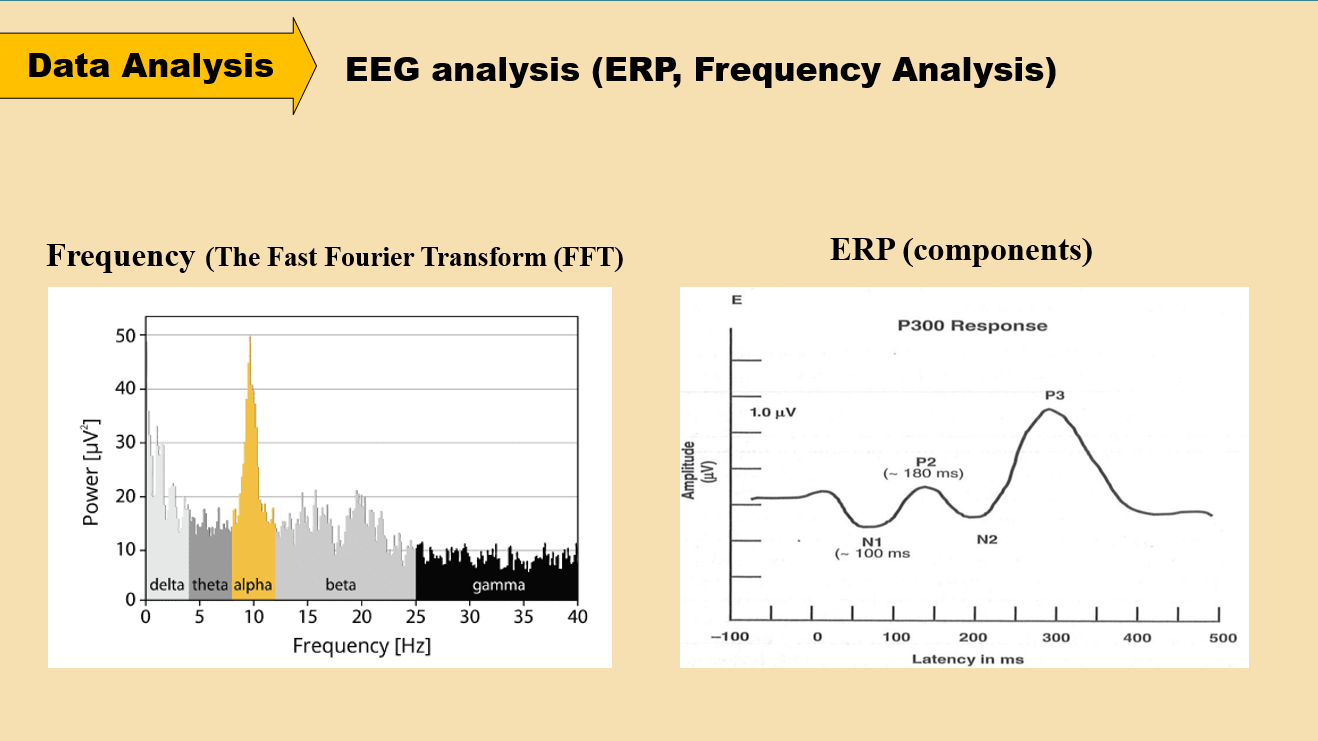
6- How to write an EEG Report?
The EEG report is structured to include demographics of the subject studied and reason for the EEG; specifics of the EEG techniques used; a description of the patterns, frequencies, voltages, and progression of the EEG pattern that were recorded. The interpretation should be concise, clear and to the point.
6-1- An initial outline
6-2- The description
6-3- The summary, interpretation, or classification
منابع:
- Beres, A. M. (2017). Time is of the essence: A review of electroencephalography (EEG) and event-related brain potentials (ERPs) in language research. Applied psychophysiology and biofeedback, 42(4), 247-255.
- Ganushchak, L., Christoffels, I., & Schiller, N. O. (2011). The use of electroencephalography in language production research: a review. Frontiers in psychology, 2, 208.
- Gernsbacher, M. A., & Kaschak, M. P. (2003). Neuroimaging studies of language production and comprehension. Annual review of psychology, 54(1), 91-114.
- Janssen, N., Schirm, W., Mahon, B. Z., & Caramazza, A. (2008). Semantic interference in a delayed naming task: evidence for the response exclusion hypothesis. Journal of Experimental Psychology: Learning, Memory, and Cognition, 34(1), 249.
- Kaplan, P. W., & Benbadis, S. R. (2013). How to write an EEG report: dos and don’ts. Neurology, 80(1 Supplement 1), S43-S46.
- Luck, S. J., & Kappenman, E. S. (Eds.). (2011). The Oxford handbook of event-related potential components. Oxford university press.
- Malik, A. S., & Amin, H. U. (2017). Designing EEG experiments for studying the brain: Design code and example datasets. Academic Press.
- Schmitt, B. M., Münte, T. F., & Kutas, M. (2000). Electrophysiological estimates of the time course of semantic and phonological encoding during implicit picture naming. Psychophysiology, 37(4), 473-484.
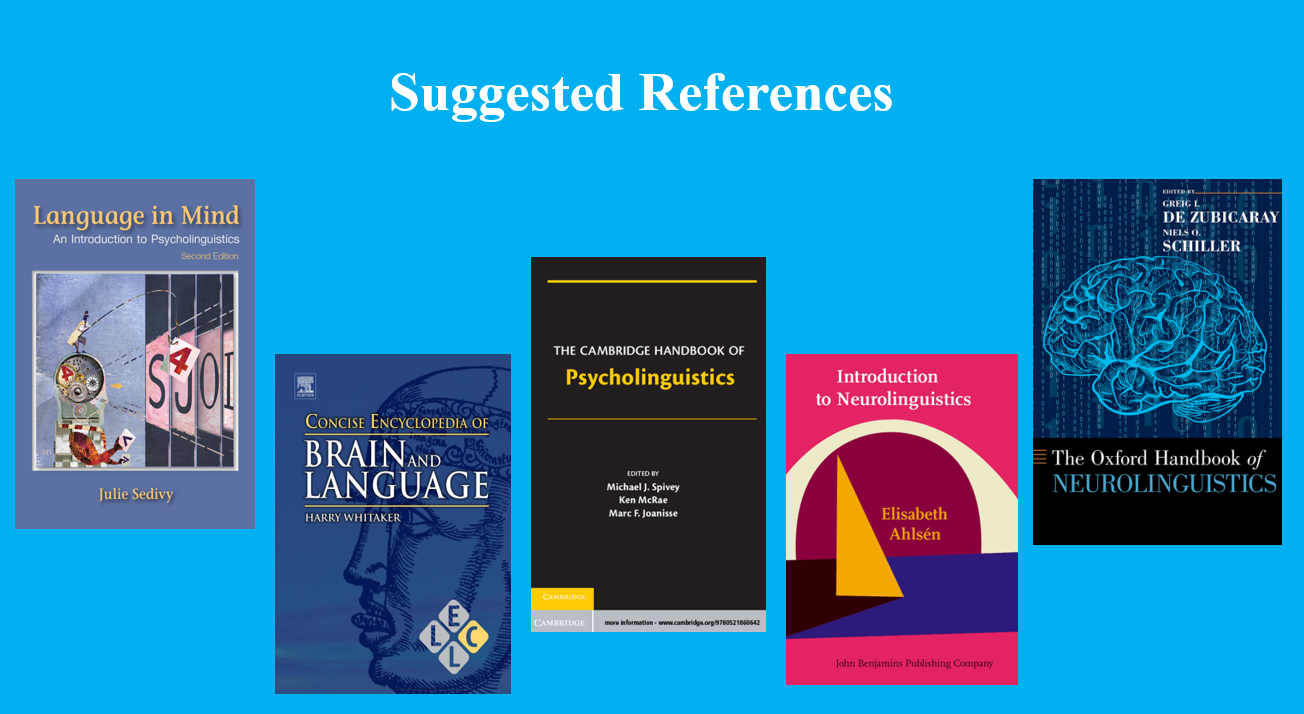

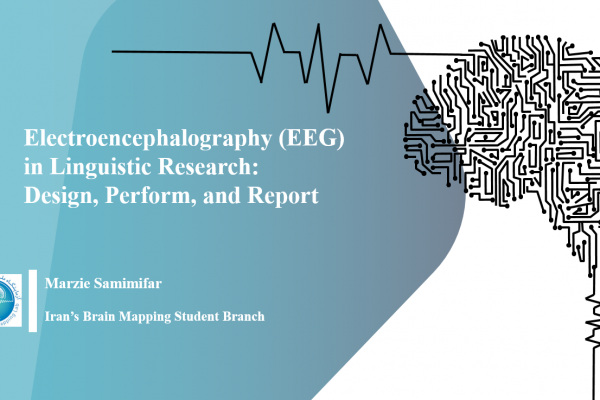



نوشته های مرتبط